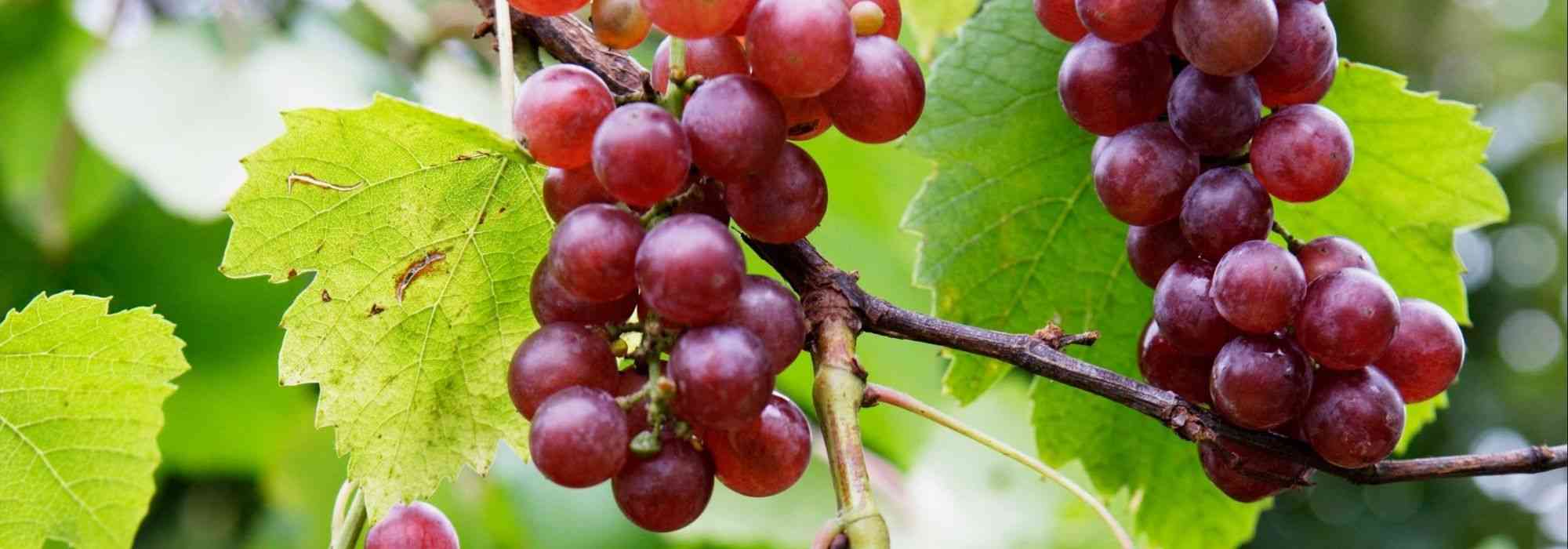
To grow a grapevine in a pot
Everything you need to grow a potted vine on a balcony or terrace
Contents
Even in town, it is perfectly possible to grow a vine-plant in a pot on a balcony or terrace! The Grapevine (Vitis vinifera) is a beautiful climbing, sarmentous bush cultivated for centuries for its sweet, juicy clusters of fruit: grapes. It forms a vine-plant or trunk beautifully twisted and will easily reach up to 6–7 m in height or spreading at ripeness.
Well established in a large pot, espaliered in a warm spot and well pruned, grapevine will be highly ornamental along a wall on a terrace or climbing a balcony railing. A venerable vine-plant will bring a touch of wisdom and a sense of being elsewhere. Some grapevine varieties that are not very vigorous, resistant and easy to maintain are well suited to pot growing.
From choice of container to potting compost, from most suitable varieties to our planting tips, we reveal our secrets to successfully grow your grapevine on a balcony or a terrace!
Which grapevines to choose for growing in pots?
Numerous varieties are available — wine grape or table grape, white, black or pink grapes — allowing you to vary colours, flavours and uses. Choose a variety well suited to your climate and resistant to diseases, such as ‘Ampelia’ grapevines (grapevine ‘Ampelia Perdin®‘) as plants grown in pots are more vulnerable.
Also favour less vigorous varieties that will not exceed 5 m in height at maturity.
The Fragola Nera and Bianca grapevines are very decorative when placed in full sun, against a wall or in a large container on a terrace. They are distinguished by grapes with a surprising wild strawberry flavour. They will take one season to settle in, during which they will grow moderately. You can also opt for the ‘Madeleine Royale’ grapevine (Madeleine Royale), which has moderately vigorous growth. A little tender but very fertile, this grapevine is well suited to terrace cultivation, where it will benefit from the relative shelter of the house.
The ‘Chasselas Doré’ grapevine is a white table-grape variety of medium vigour but very fertile, and adapts well to large containers.
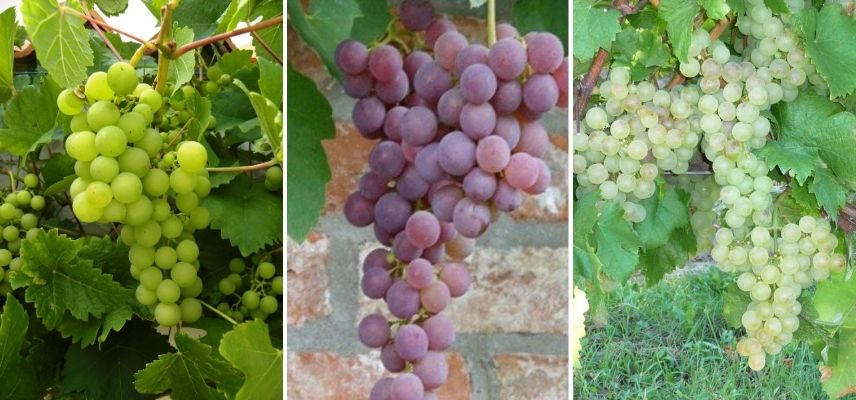
Grapevine ‘Ampelia Perdin’, ‘Fragola Nera’ and ‘Chasselas Doré’
For guidance on choosing, see this article: “Grapevine: choose the right variety”
Read also
Vine: planting, pruning and careWhich container should I choose?
Grapevine is a vigorous climbing liana that generally grows quite quickly; it will need a large volume of soil to develop well and to allow its vine-plant to spread. This liana with woody climbing stems reaches up to 5 m in height and can spread over several metres. Pot must be suited to size of vine you are going to plant and be at least 60 cm deep. You should choose a round pot of at least 35 litres or a large planter of 60 × 60 cm: a container of 100 litres is ideal. We recommend either a terracotta pot or a wood planter which, because of their weight, will help it remain well balanced.
Pot must be drilled to allow water to drain, to avoid suffocating or rotting root system. Grapevine hates having its roots in water. Excess moisture also favours development of various diseases.
Discover other Grapevines
View all →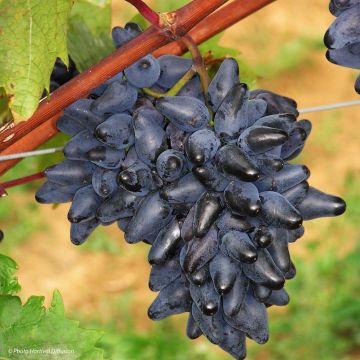
Available in 1 sizes
Available in 1 sizes
Available in 1 sizes
Available in 1 sizes
Available in 1 sizes
Available in 1 sizes
Available in 1 sizes
Available in 1 sizes
Available in 1 sizes
Available in 2 sizes
What is the best exposure?
Grapevine needs space: if space available is too limited, it is better to forgo planting it.
It also needs several hours of full sun per day to develop well and produce grapes satisfactorily. Although hardy down to around -20°C on average, its flowering is vulnerable to late spring frosts: flower buds freeze from -2°C. Give your vine a very sunny, warm, sheltered position, protected from prevailing cold winds, especially in colder regions to allow good ripening of the clusters: ideally position it against a south-facing wall. On a balcony, you can place it close to the railing to train it along its length.
Which growing medium should I use?
Vine is an undemanding plant that prefers well-drained substrates that do not retain moisture: the drainage layer at the bottom of the pot (gravel, broken pot shards, clay pebbles, pumice) should represent about 20% of the volume. Prepare an equal-parts mix of good garden soil and potting compost, with coarse sand added (for drainage). Add well-rotted compost and a few handfuls of fertilisers for fruit trees.
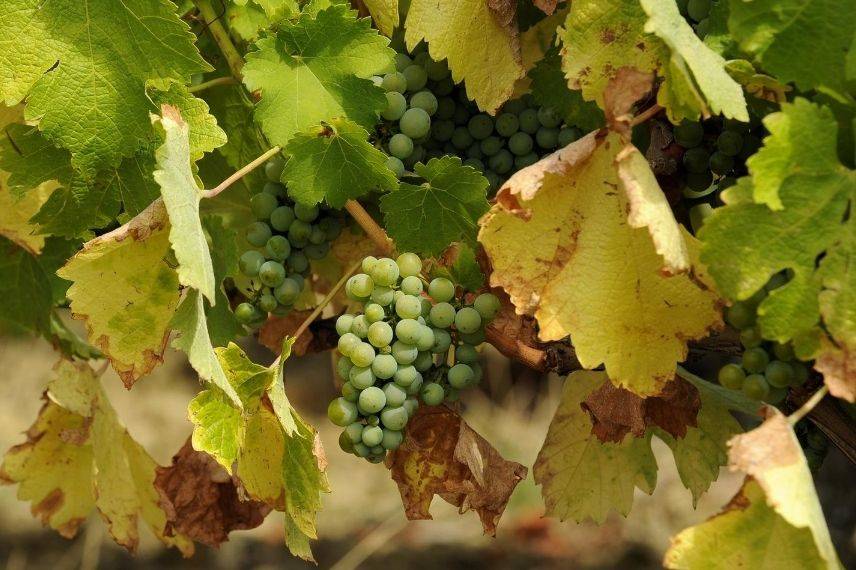
Top tips for planting grapevines in pots
Here’s how to successfully plant your grapevine:
- Start by laying a drainage layer at the bottom of the pot with drainage holes
- Fill the pot with substrate
- Place the vine in the centre of the pot and plant it leaving the graft union visible (3 to 5 cm above the soil): avoid burying the collar but make sure the roots are well covered
- Backfill, then firm down
- Water generously
- Insert two stakes into the pot to support a suitable framework (simple wooden trellis against a wall or taut wires, wire mesh…) on which it can cling: it is necessary to train and espalier the young shoots regularly in a fan shape. They will then climb by themselves.
→ And, to learn all about grapevines and their cultivation, discover our plant page: “Grapevine: planting, cultivation, pruning”
How to care for a potted grapevine?
Watering
Not too much, not too little! In pots, waterings should be regular throughout the year, especially during the first years because potting mix dries out faster than in ground. However, do not water every day; do not let potting mix dry out completely. Avoid water pooling at the bottom of the pot, and remove saucers. Once well established, grapevine will more easily tolerate slightly dry soil for short periods, especially if pot is large.
Fertilisation
Grapevine is an undemanding young plant that does not require regular fertiliser applications. On the contrary, that would favour foliage to the detriment of fruits. However, in pots reserves are used up faster and a few fertiliser applications are necessary. Apply a slow-release fertiliser during the season. Consider enriching surface soil with crushed horn or iron chelate every 2 years.
Pruning
At planting, prune above 2 buds to encourage two shoots and tie the most vigorous to a stake.
Train young shoots as they grow. Woody climbing stems can gain several metres per year and can exceed 5 m in length over time. Grapevine can quickly become very invasive. In pots, pruning is all the more essential, especially given reduced space compared with garden. It helps contain vigorous growth of this liana, encourages fruiting and helps limit diseases. Each year, in February–March, before growth resumes but after frosts, we recommend lightly pruning your potted grapevine :
- Remove shoots that fruited last year by cutting above 3 buds
- Eliminate weak, sterile or poorly placed shoots
All Ingrid’s advice on pruning grapevine is on our blog!
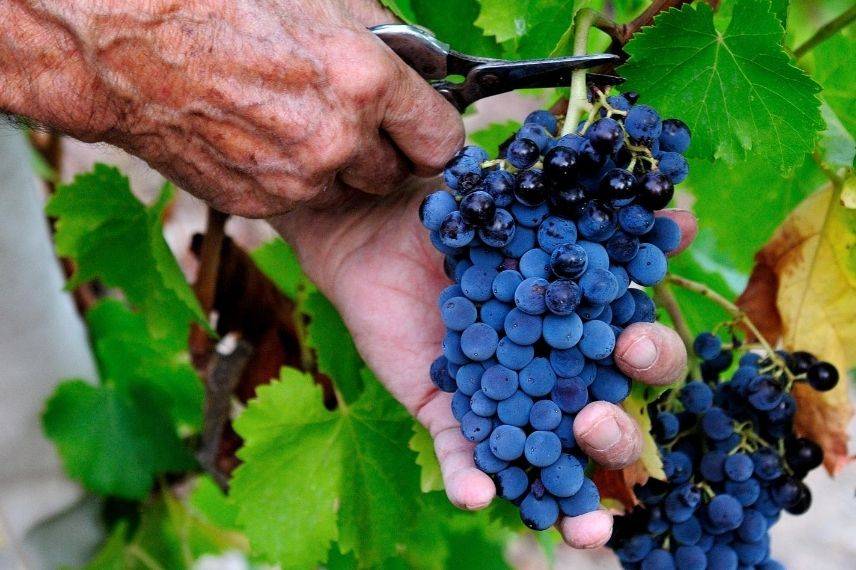
Repotting
Repotting can be tricky, especially if pot is large and young plant is attached to its support. From second or third year, it is preferable to top-dress the potting mix to renew the substrate. Every year, late winter or early spring, carry out a top-dressing: scrape away surface of substrate to remove first 20 centimetres, then add fresh potting mix mixed with a little well‑rotted compost.
How to protect it from cold in harsh climate?
Hardy, grapevine for wine or table grapes does not need to be overwintered. However, it is better to take some precautions because in pots roots are more exposed to cold and bad weather than in ground. In case of severe frosts forecast, we advise wrapping the pot with cardboard or a thick linen cloth to insulate roots from cold and keep them warm. You can also wrap the container completely with horticultural fleece. Remove these protections in spring when frost is no longer a risk.
To learn more
Discover our other advice sheets dedicated to grapevine:
- Grapevine: choose the right variety
- How to take a grapevine cutting?
- Training grapevine against a wall
- 10 hardy varieties for northern France
- Grapevine disease
- Subscribe!
- Contents
































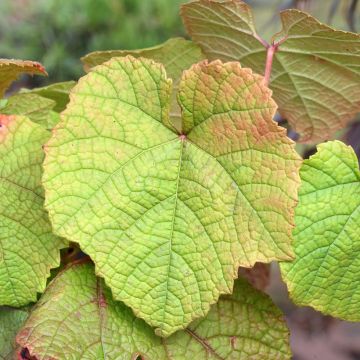

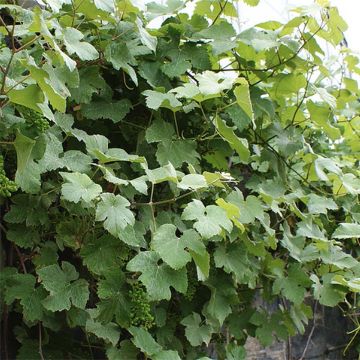
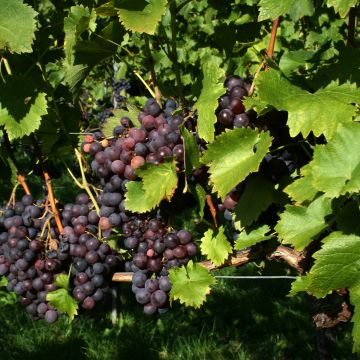

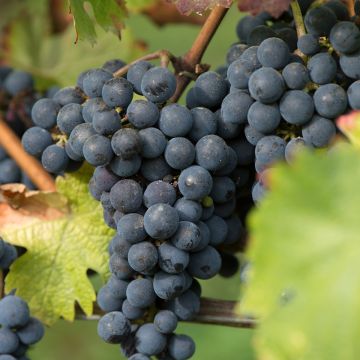

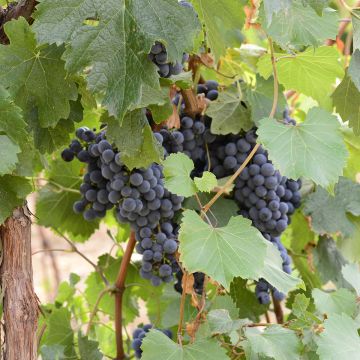

Comments